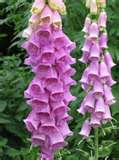
Herbs have so many wonderful uses. Today I will discuss the active ingredients found in some common herbs and how they are used.
There are many useful elements found in herbs. For centuries herbs have been used for medicinal purposes. Like any medicine you may take, you should also speak with your family physician any time you use an herbal substance or supplement for healing purposes, as they may be harmful to you or interfere with other medicines you may be taking.
Here is a list of common and active ingredients found in herbs and their uses.
Tannins- found to have a protective effect on the skin, as it shields and protects the skin against inflammation and infection. Tannins are found in horsetail, elderflower and raspberry leaf.
Flavanoids-found mainly in plant tissues containing a yellow or white pigment. Flavanoids help the circulation, protect blood-vessel walls and reduce inflammation. Flavanoids can be found in St John's wort, yarrow and elderflowers.
Essential oils-found in microscopic cells inside of the flower, leaves, roots, wood, fruit peel, and berries. These oils have a strong aroma and give the flower its' unique fragrance. Oils are extracted and used in the production of perfumes or oils for aromatherapy. Essential oils are most extracted from lavender, rosemary, and roses.
Mucilages-a gel-like substance that cools, soothes and protects the skin and the delicate membranes of the digestive, respiratory an urinary systems. Mucilages are most commonly found in comfrey and aloe Vera leaves.
Saponins- when mixed with water, saponins lathers. Thus it is used to make skin washes, hair rinses and antiseptic skin cleaners. Oats, calendula and yarrow are good sources of saponins.
Alkaloids-the most powerful of all plant constituents and are not recommended for home use.
Their main use is for treating the nervous system.
Bitter principles-with a bitter taste, they increase the flow of digestive juices, which then improve all aspects of absorption and digestion. found most commonly in dandelions, calendula and camomile.
Vitamins and trace elements-found in all herbs, their purpose is to build vitality and improve overall health.
After a long and stressful week why not treat yourself to a soothing herbal bath. Here is how you can enrich your tub time with some herbs.
Herbal baths both soothe and cleanse the skin. They can be enjoyed two ways- either scatter them directly into your hot bath water or place the herbs into some cheesecloth and tie the bag onto the faucet allowing the hot water to run through and over the herbs into your bathtub.
Some recipes for Bath Balms
Relaxing-
2/3 cup of fresh lemon balm leaves
or
2/3 cup of fresh myrtle leaves
or
2/3 cup fresh sweet marjoram leaves
Invigorating-
2/3 cup fresh rosemary leaves
or
2/3 cup fresh yarrow leaves
or
2/3 cup fresh sage leaves
You can vary your bath by mixing your two favorite herbs together to make up 2/3 cup. If you want to soften your skin as well, add 2 Tablespoons of oats to the cheesecloth mixture and allow the bath water from faucet to run through the cheesecloth. Your bath water will be slightly milky in color but will leave your skins silky smooth.
No comments:
Post a Comment